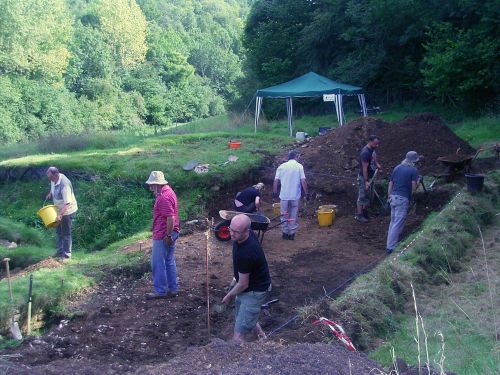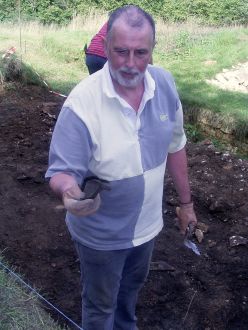Welcome to another year of excavation at the Truckle Hill Roman bath-house. Every autumn since 2007 Wessex Archaeology has been working with a group of volunteers to investigate the site which is near North Wraxall, Wiltshire. This year the excavation at Truckle Hill Bath-house is part of the Heritage Lottery Funded project ‘Celts and Romans in North Wiltshire,’ aimed at helping local communities get in touch with the history of the area, and get involved in researching and exploring their community’s past.
The first day of excavation welcomed volunteers and Wessex staff with unbelievable, sunny weather. When I arrived on site I joined the day’s group of volunteers in exploring the landscape surrounding the bath-house, led by one of the volunteers who has taken part in every year of excavation at the site. The project boasts new volunteers as well as a group of dedicated people who take part every year. This year’s excavation also had a special new addition - which was the reason we were off exploring and not digging. For the first time the trench at Truckle Hill was opened by a digger and not by hand.
In previous years the hard work of the volunteers has revealed the extent and layout of the bath-house, the existence of two separate, earlier buildings underneath it, and the reuse of the bath-house as a corn drier. Last year’s excavation led to the exciting realisation that the bath-house in fact faced up the slope towards the villa rather than down the slope as had been previously thought. This changed our understanding of the use of two of the rooms in the bath house; the tepidarium (warm room) is actually the caldarium (hot room), and vice versa!
The digger removed the top layers of soil on the west side of the bath house, where the trench has been opened to further investigate one of the earlier buildings. Meanwhile the volunteers and I ate lunch and watched. Despite knowing that the digger was saving time and a lot of heavy lifting, I think everyone was getting fidgety, watching and waiting to get in and dig. Once our meal was over and the digger driver had taken a break for his, there was no stopping a few volunteers from getting into the trench and poking around with their trowels. It wasn’t long before the digger driver had completed his work and everyone could climb into the trench and get to work, joking about the incredible amount of work that they had completed in just one morning. There was even the opportunity, when visitors arrived in the afternoon, to share this joke. It did get let slip eventually that the digger had paid a visit in the morning.
All jokes aside, by the time we packed up our kit in the evening the trench had been transformed. The section edges had been tidied, the depth of a large burnt deposit from the corn drier was revealed, and the volunteers had been rewarded for their hard work by a large piece of Roman pottery.
I’m looking forward to getting back out to the site to see how much more the trench has transformed after a few days of excavation.

